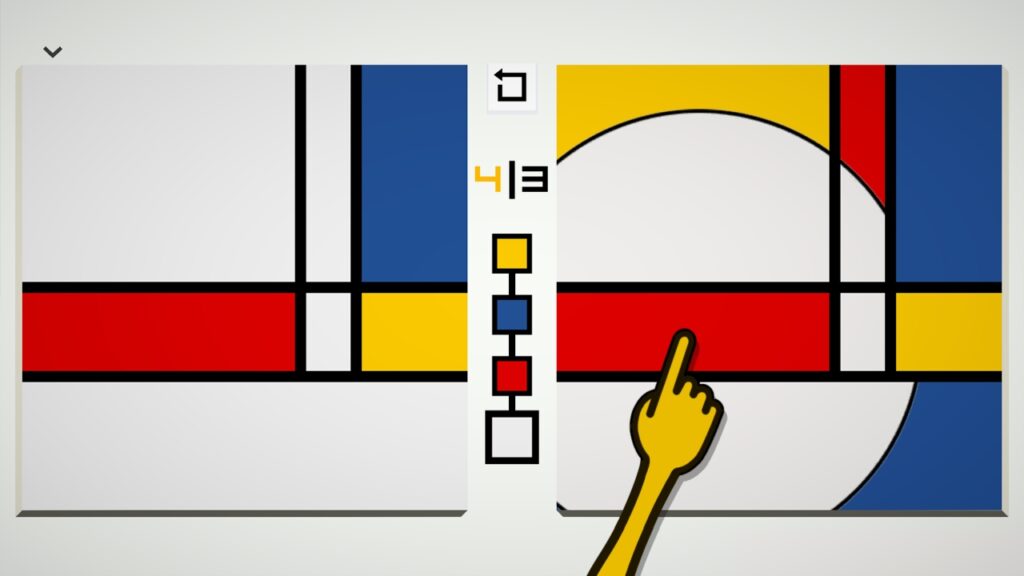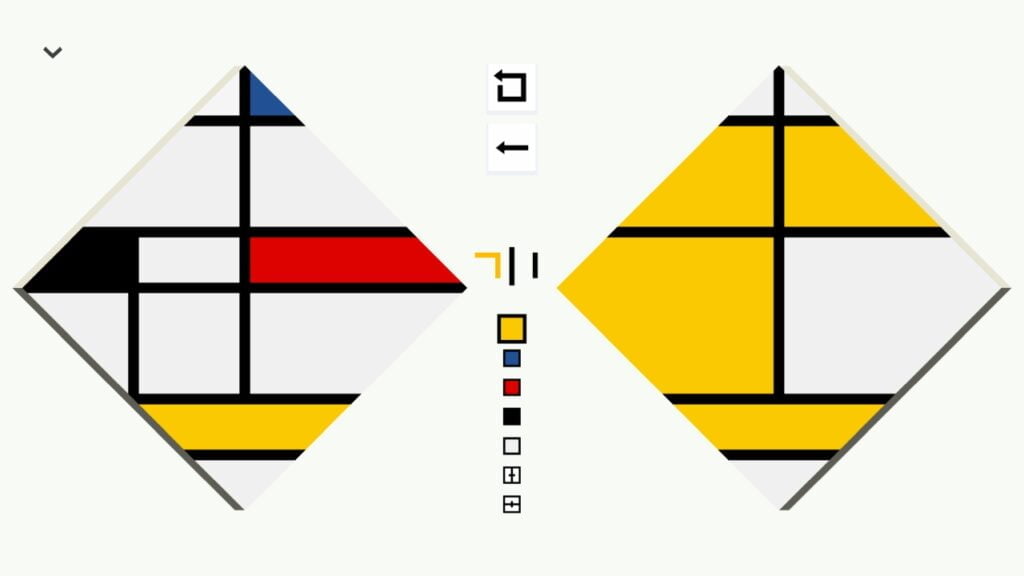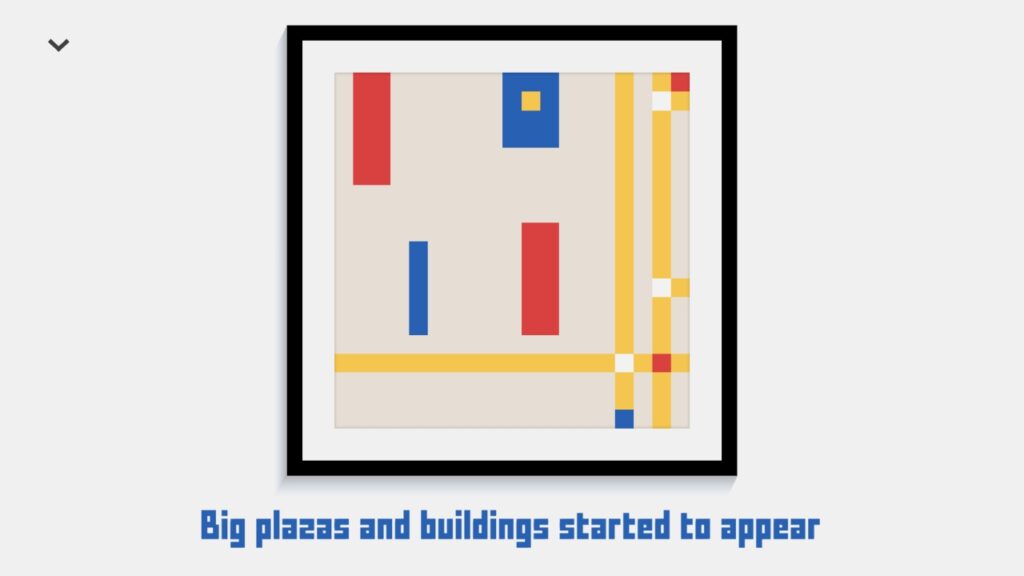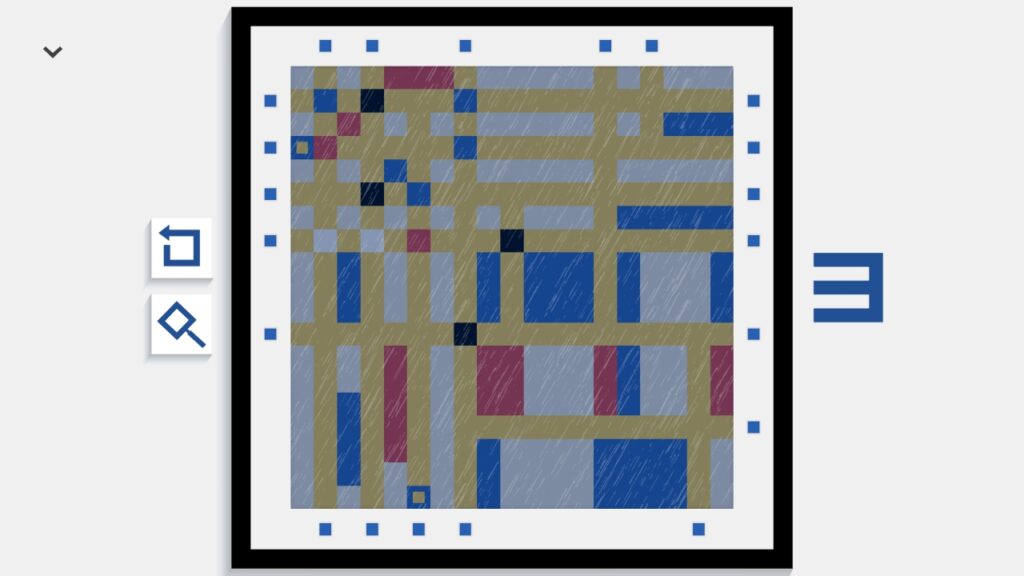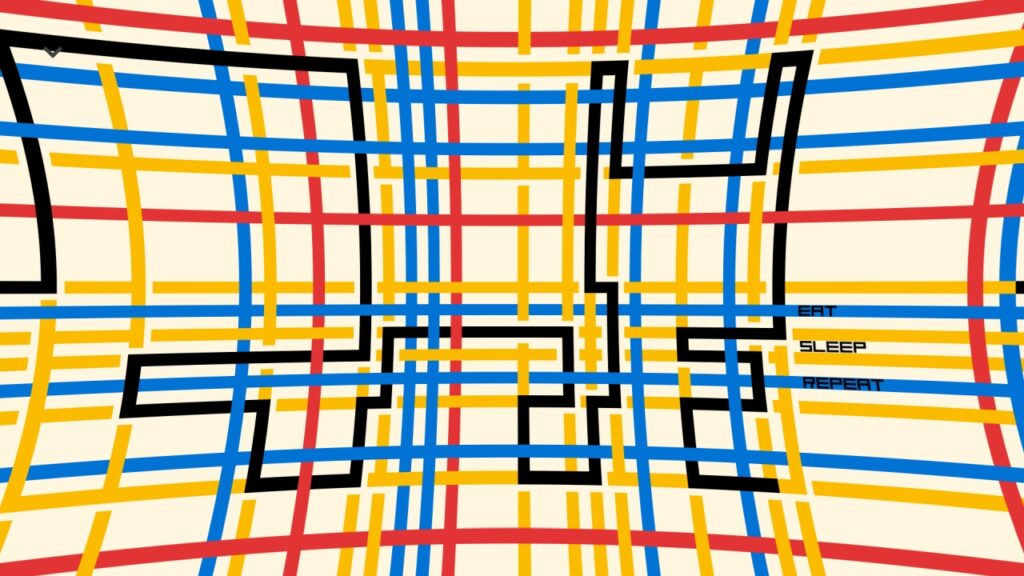Please, Touch The Artwork is probably one of the weirder games I played this year. I’m still puzzling if I can classify this as a game. It’s a story wrapped in puzzles and paintings. It’s a nice change of pace. Are you into Art? Well, then let’s dive in together, shall we?
Please, Touch The Artwork
Please, Touch the Artwork is a playful puzzle game inspired by abstract Art. And not any abstract art – it’s based around De Stijl, which is actually from the Netherlands. So I was pretty pleased to see this turn into a game. De Stijl, Dutch for “The Style,” also known as Neoplasticism, was a Dutch art movement founded in 1917 in Leiden. De Stijl consisted of artists and architects. So in a more narrow sense, the term De Stijl refers to a body of work from 1917 to 1931 founded in the Netherlands. Proponents of De Stijl advocated pure abstraction and universality by reducing the essentials of form and color; they simplified visual compositions to vertical and horizontal, using only black, white, and primary colors.
Mondriaan
One of the most famous painters in De Stijl was Piet Mondriaan, or Pieter Cornelis Mondriaan. He was a Dutch painter and art theoretician regarded as one of the greatest artists of the 20th century. He is known for being one of the pioneers of 20th-century abstract Art, as he changed his artistic direction from figurative painting to an increasingly abstract style until he reached a point where his artistic vocabulary was reduced to simple geometric elements.
Mondrian’s Art was highly utopian and was concerned with a search for universal values and aesthetics. He proclaimed in 1914: “Art is higher than reality and has no direct relation to reality. To approach the spiritual in Art, one will make as little use as possible of reality because reality is opposed to the spiritual. We find ourselves in the presence of abstract Art. Art should be above reality; otherwise, it would have no value for man.” His Art, however, always remained rooted in nature.
Storytelling
Please, Touch The Artwork touches on these aspects as well. It’s an attempt to get you to see the Art with a new perspective, see it as part of a lineage that can be understood, see how it has evolved and shifted forms over time, and have a go yourself. By using three abstract paintings as the foundations for three types of puzzles, Please, Touch the Artwork encourages you to dabble in the process of abstract Art, which is the part of Art that we generally don’t get to see. You may be trying to solve something in the game to beat a level, but you’re also making choices and thinking critically.
The puzzles are decent and sometimes great. All the puzzles are based on famous Mondriaans, so you probably know them by heart. In the first series of puzzles, you work on matching those classic Composition-type Mondrians – making your canvas on the right look like the work on the left. You create lines. You touch blocks to spread colors to any adjacent walls as if the whole thing was a sort of arty cellular automaton. There are hints for when you get stuck, but the core fun is experimenting, taking a canvas between various states, and rescuing a disaster.
In between this, you get bits of history and anecdote and theory. At one point, you get what amounts to a cut-scene in which you can see Mondrian inching towards truly being Mondrian – the natural world grows more angular, and wildlife gives way to human design. These lines are almost straight, with colors that are nearly flat expanses. And yet you also see that looking backward, the lines and the abstraction were there from the start, too – that windmill he painted back in 1908 or whatever is already throbbing with edges and color as if it’s itching to burst open and become pure shape and tone.
Gameplay Elements
Each of the three puzzle series has insights like this. In the second, very broadly, you work to unite different shapes by pinging them around the crossing lines of a series of paintings inspired by Broadway Boogie Woogie. It’s all about understanding the rules of the grid – where it will take a piece that you have launched into it – and it’s also about making sure you find the correct order of moves. At times, it’s a bit too much for me. In the third series, you start by playing what amounts to a game of Blockade, or Snake, collecting letters as you go, moving through expanses from Mondrian’s New York City. I love it: wriggling through pipes, turning back on myself, finding a letter in a seemingly impossible spot.
Like all the challenges, this will grow in complexity as you work through the game. They all evolve the way that an artist’s work becomes. Opportunities appear and are exploited. Analogies and interpretations suggest themselves. But here, you aren’t just looking at the finished piece; you are part of that thrilling, unpredictable process, so the opportunities, analogies, and interpretations are available to you, as well. In addition, you get to sit closer to the artist while they are thinking.
Conclusion
When you realize this, you unlock the game’s potential, and you’ll move beyond the idea of recreating Mondriaans’s work in MS Paint (like we all did). It’s much more than just lines and blocks; they were always there; you just had to fill in the blanks. With Please, Touch The Artwork, you’ll get three stories of around +-1h, each illustrated by a type of puzzle and its variants. Puzzles are enjoyable to just look at, and a piece of music that contributes to an overall relaxing atmosphere. Puzzles without headaches, perfect for a little evening of relaxation, and an excellent addition for those interested in the finer arts. Snob out.

